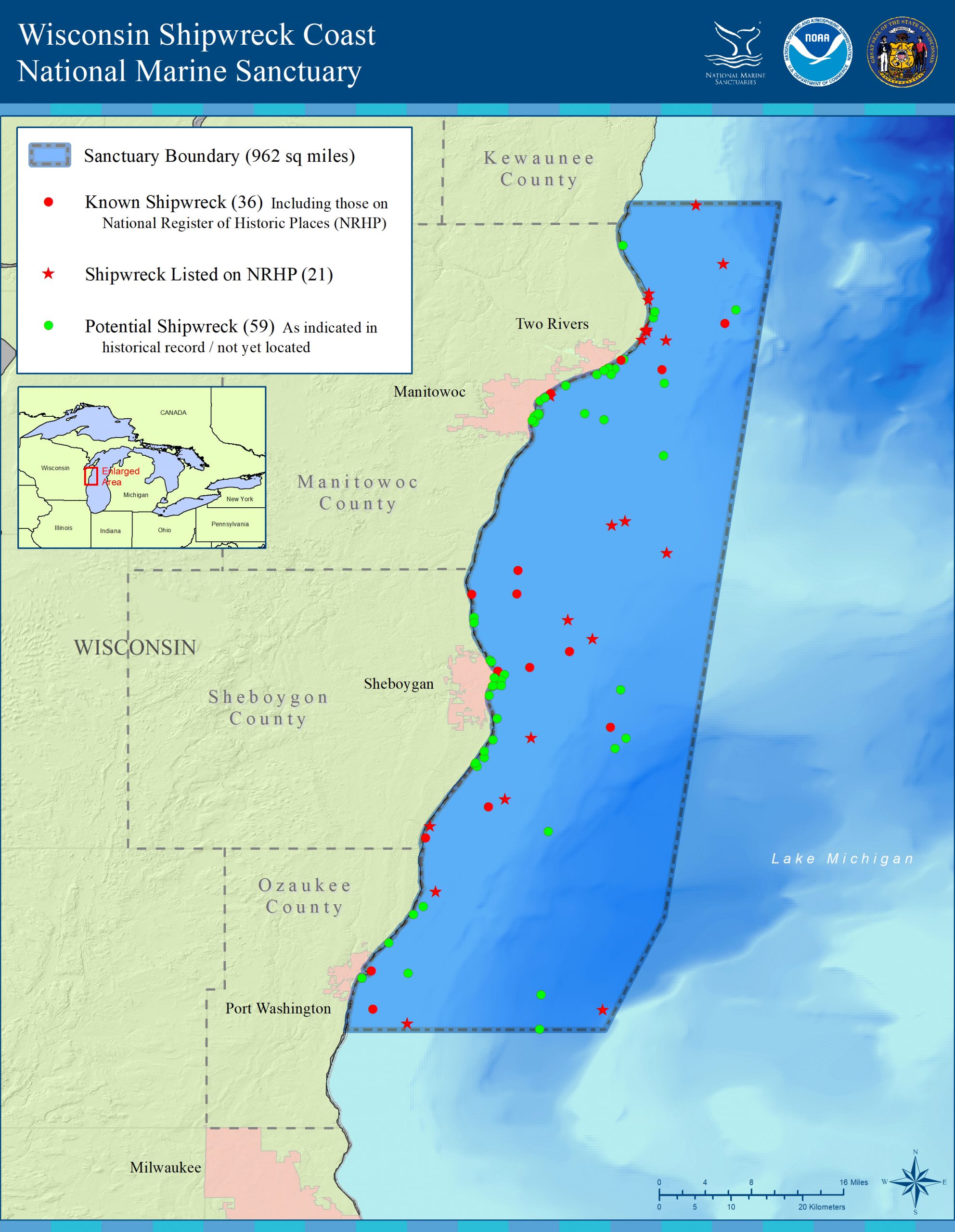
On June 22, 2021, NOAA announced the designation of a 962-square-mile area of Wisconsin’s Lake Michigan as a national marine sanctuary to protect 36 historically significant shipwrecks and related maritime heritage resources.
NCCOS mapping products and ecological assessments of the area guided the designation of the Wisconsin Shipwreck Coast National Marine Sanctuary and will inform its future management. These data on lakebed habitats, substrates, water quality, invasive mussels, and nuisance algae are also being used to update nautical charts and improve our understanding of lake ecosystems and underwater cultural resources.
Well-preserved by Lake Michigan’s cold, fresh water, several of the known shipwrecks are essentially intact and look much like they did when they sank. The area also includes Wisconsin’s two oldest known shipwrecks, and archival research suggests there may be dozens more yet to be discovered.

Spanning the early 1800s through the 20th century, the shipwrecks represent a cross-section of vessel types that played critical roles in transforming the Great Lakes from a maritime frontier into the nation’s busiest waterway. The ships carried grain and raw materials east as other vessels traveled west loaded with coal, manufactured goods, and settlers.
“The designation of this sanctuary is a milestone for NOAA, Wisconsin, and the nation,” said Nicole LeBoeuf, acting director of NOAA’s National Ocean Service. “This new sanctuary opens the door to world-class research, educational opportunities, and tourism for generations to come.”
NOAA and the state of Wisconsin will co-manage the sanctuary. The sanctuary designation will take effect following 45 days of continuous session of the U.S. Congress after publication of this action in the Federal Register.
